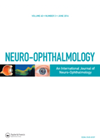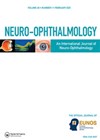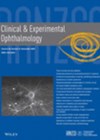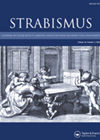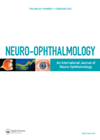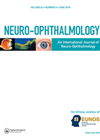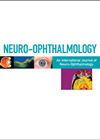Lagophthalmos as a potential complication of COVID-19
Lagophthalmos is a condition associated with the inability to close the eyelids effectively, with the main cause being facial nerve palsy. The authors aimed to investigate whether lagophthalmos was associated with coronavirus infection (COVID-19) by comparing patients diagnosed with lagophthalmos...
Detailed overview of diplopia causes and outcomes for a single tertiary care centre
The purpose of this study was to study the aetiology, progression and outcome in patients with binocular diplopia presenting to the ophthalmology department of a tertiary care centre in India. The study had a prospective observational design where all patients...
Surgical outcomes of isolated medial rectus palsy
Isolated medial rectus is a rare clinical entity. This prospective study of 32 patients from China showed that this was caused most commonly by iatrogenic injury (43.75%), trauma (37.50%) and congenital (18.75%) causes. An average of 60 ±25 prism dioptres...
Surgery for superior oblique palsy with superior rectus contracture
With limited information in the literature regarding simultaneous surgery in cases with superior rectus (SR) contracture in superior oblique (SO) palsy, the authors aimed to evaluate the efficacy of combined SR/IO surgery. This was a retrospective study of 15 cases...
A rare case of oculomotor nerve palsy from presumed cavernous angioma
Cavernous angiomas of the cranial nerves are extremely rare, and those of the oculomotor (third) nerve are rarer still. The authors present a single case study of presumed cavernous angioma involving the subarachnoid portion of the left third nerve, which...
EP in a case of abducens nerve palsy
Ecchordosis physaliphora (EP) is a rare non-malignant mass that originates from remains of the notochord and is typically asymptomatic. Symptomatic cases are extremely rare, and the majority are managed by surgical resection. This case study reports a 42-year-old male who...
Characteristics and incidence of sixth nerve palsy in children with intracranial hypertension
The authors report the incidence and characteristics of sixth cranial nerve palsy in paediatric patients with intracranial hypertension. A retrospective review of records was performed in central Ohio over a three year period and nine children were found to have...
An unusual third nerve palsy case report
The authors present the unusual case of a 23-year-old male presenting to hospital with right eye pain, right upper eyelid ptosis, blurred vision and diplopia, developing immediately after a penetrating injury to his right upper eyelid. On assessment he was...
An unusual case of partial oculomotor nerve palsy
The authors present an unusual case of intra-axial oculomotor nerve involvement due to midbrain infarction. The 65-year-old male patient presented with unilateral complete blepharoptosis and slight limitation of upgaze. Neurological examination revealed a complete ptosis of the left eyelid, slight...
Surgical outcomes in third nerve palsy
The authors of this article explore the factors associated with successful surgical outcomes in third nerve palsy, which is known to be difficult to treat. A number of case notes were reviewed for patients who underwent surgery or botulinum toxin...
Surgical success rates in abducens palsy management
The aim of the study was to identify factors associated with surgical outcomes in isolated abducens palsy. To achieve this goal the authors reviewed the records of adult patients with abducens palsy who underwent strabismus procedures during a fourteen year...
Abducens nerve palsy following surgical correction of craniosynostosis
The authors present two cases of unilateral abducens palsy secondary to a recent trans-sutural distraction osteogenesis (TSuDO) operation for craniosynostosis. The basic principle of the TSuDO procedure is described as dissection and distraction of the prematurely fused sutures. This complication...


